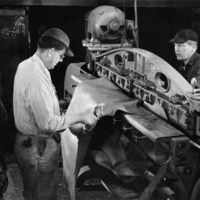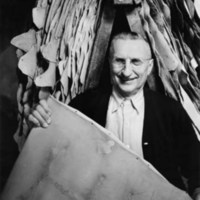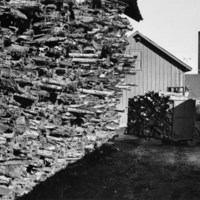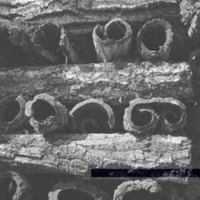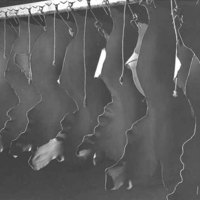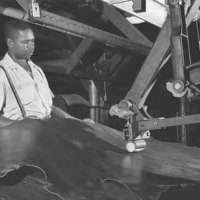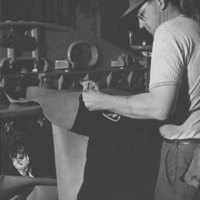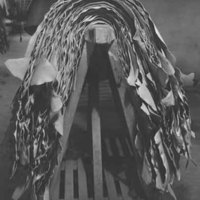Browse Items(95697 total)
Sort by:
Salz employee Red McCafferty and a co-worker work with a machine called a "splitter" to separate the hide structure into two distinct layers. Splitting the leather into a thinner, more pliable form, increased its markets.
Date: 1954
Type: PHOTO
Joe Bellas, plant superintendent at the Salz Tannery during the 1950's holds the finished leather product. Bellas was Yugoslavian, and according to the Lezin family "tough and fair".
Date: 1954
Type: PHOTO
The forklift was the modern day replacement for the dray horse. Even into the late 1950's, bark was stored and dried across River Street from the main Salz Tannery complex and transported across River Street/Highway 9 as needed.
Date: 1954
Type: PHOTO
Bark storage was crucial to the smooth operation of Salz Tannery. You needed to cut and store enough bark to last for a year. There was no protection from fire at the River Street sheds.
Date: 1954
Type: PHOTO
Tanoak bark was stacked for drying. Originally harvested locally, tanoak provided the chief ingredient in tanning California Saddle Leather (TM), a Salz specialty. As local supplies dwindled, Salz purchased it from suppliers throughout California.…
Date: 1954
Type: PHOTO
Vegetable leather, drying slowing in the tack rooms high above the tanyards at the A.K. Salz Company.
Date: 1954
Type: PHOTO
A Salz tannery employee glazing California Saddle Leather (TM). After tanning and processing, each side was glazed twice, to create a mirror-like surface.
Date: 1954
Type: PHOTO
An employee at Salz tannery, working the splitting machine. Split leather was used for making wallets, purses, briefcases and shoes.
Date: 1954
Type: PHOTO
A stack of sides on a "horse." Horses were used at Salz to move sides of leather into measuring until the company closed in 2001.
Date: 1954
Type: PHOTO
The front of the historic Salz Leathers building remained unchanged for over 140 years. The lettering was more recent. It read in full, "A.K. Salz Company" and featured the company logo for "Salz California Saddle Leather." An unnamed employee stood…
Date: 1954
Type: PHOTO

